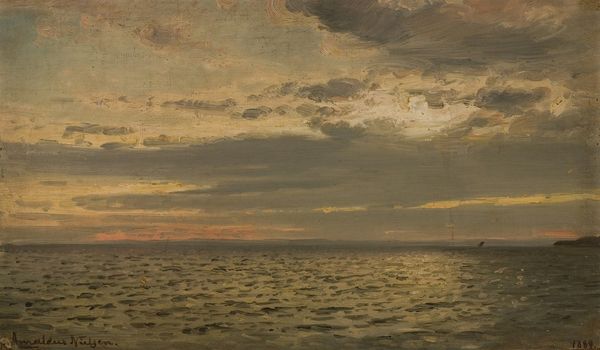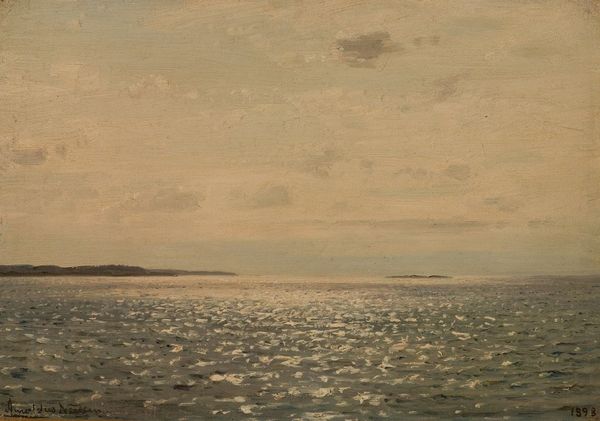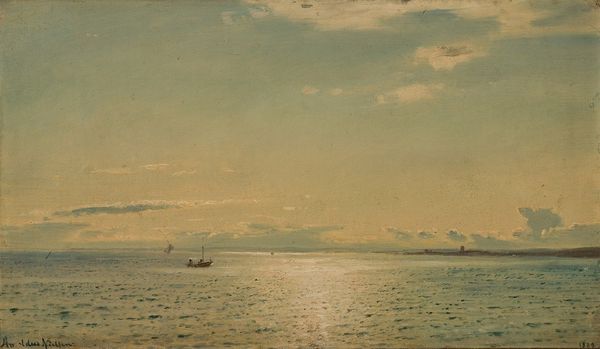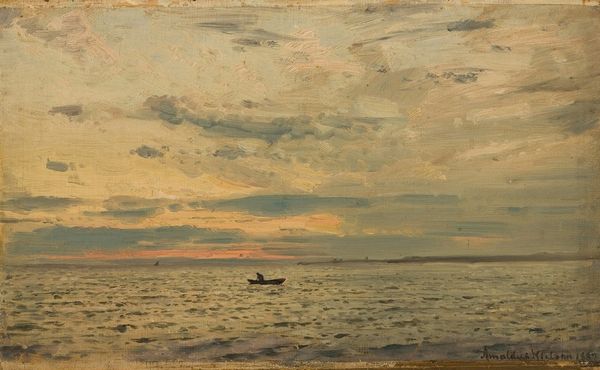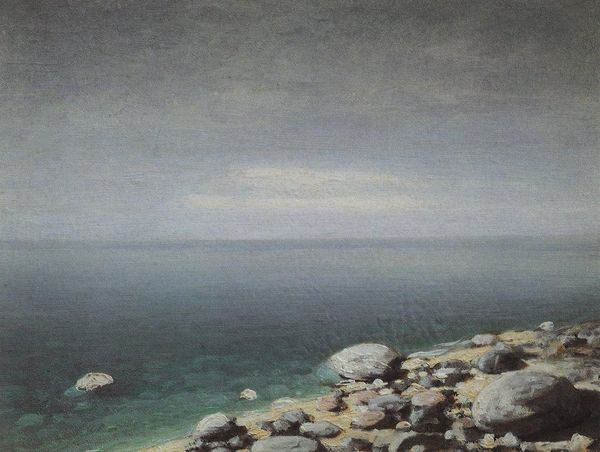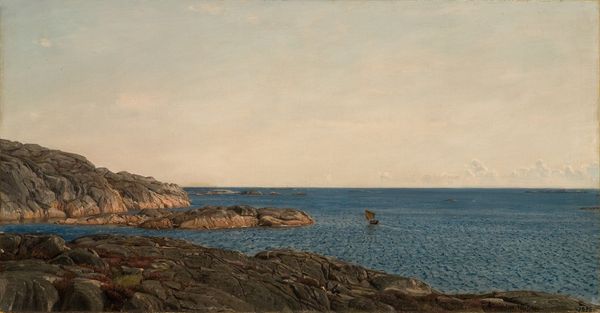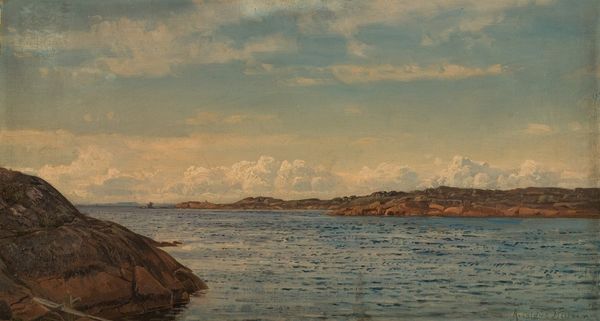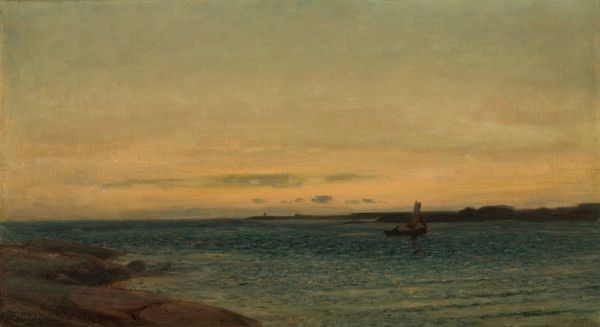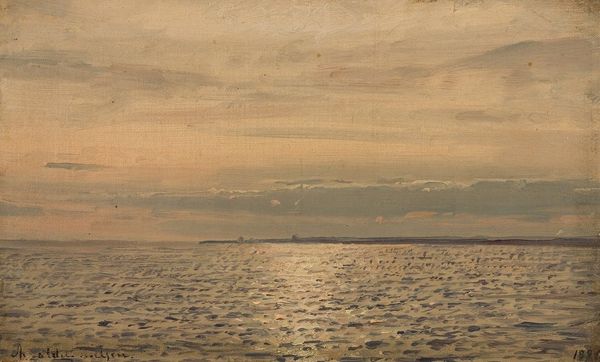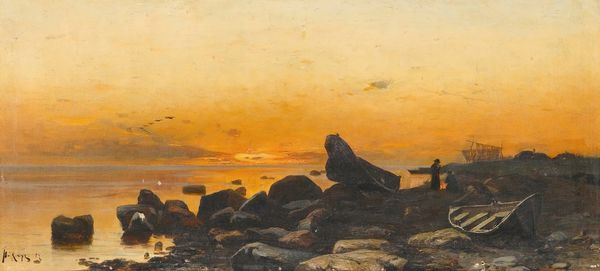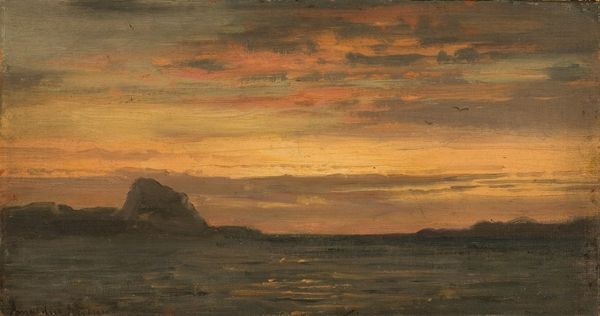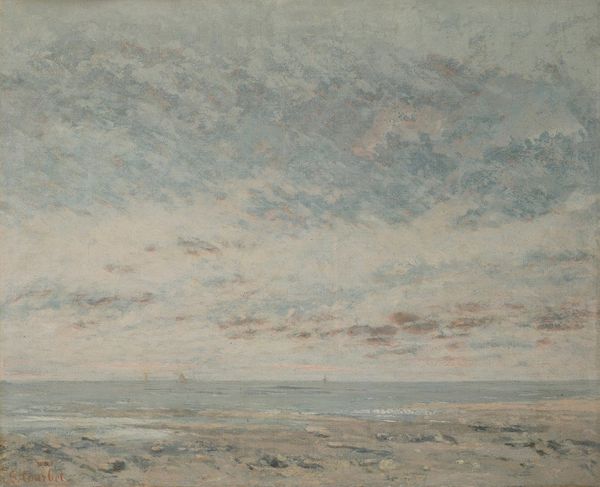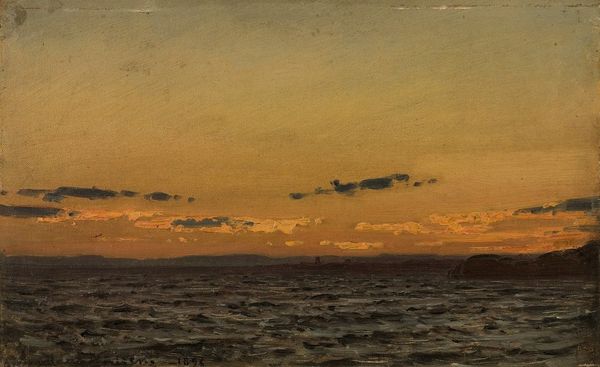
Copyright: Public Domain: Artvee
Editor: This is Amaldus Nielsen's "Godvær, Jæren," painted in 1894, using oil on what looks like a relatively small canvas. There's such a somber, contemplative mood to it. It really captures a sense of isolation. What can you tell me about it? Curator: Immediately, I’m drawn to the materiality of the paint itself. Notice the visible brushstrokes, especially in the sky. It points to Nielsen's active labor and the sheer physical effort involved in creating this atmospheric effect, one stroke at a time. Also, it looks like he’s painted this "en plein air". That has implications, right? Editor: Yes, I think so! That Impressionist emphasis on capturing a fleeting moment means a different way of interacting with the environment itself. How does that method affect the final product? Curator: Precisely! The portability of his materials -- the canvas, oils, and easel -- enabled him to directly confront and represent the rapidly changing conditions of the Jæren coastline. It also implies that he had access to specific resources to purchase all that he needed for making this painting! Editor: So, instead of just a romanticized view of nature, we're also seeing the social and economic circumstances that allowed this piece to be created. Curator: Exactly. How does Nielsen's choice of subject, the coastline itself, play into that social context? Think about what the coastline would have meant for the local communities there in 1894. Editor: Fishing, trade, maybe even a burgeoning tourist industry... Painting a coastline isn't just a neutral act; it's choosing to depict a space that has a specific role within society. I never considered that when observing this piece! Thank you. Curator: My pleasure. Recognizing the significance of these everyday sites gives this piece depth. I am thinking of those artist cooperatives back in the late 1800's that sought out common folks, not patrons.
Comments
No comments
Be the first to comment and join the conversation on the ultimate creative platform.

